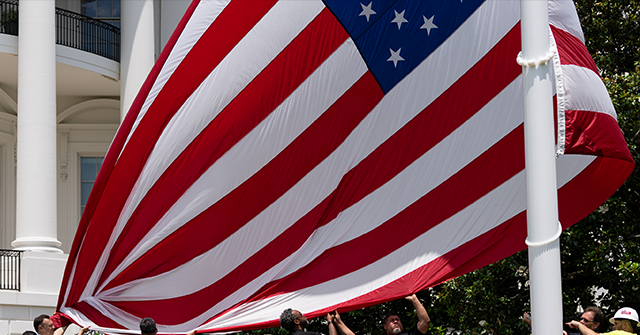Golden Age: Trump Tariffs Deliver Surprise Budget Surplus

The federal government posted an unexpected budget surplus in June, fueled by a sharp rise in tariff revenues and higher-than-anticipated tax receipts, marking a notable vindication for President Donald Trump’s economic strategy.
The $27 billion surplus reported Friday by the Treasury Department stood in stark contrast to forecasts for a $50 billion deficit, representing one of the largest upside surprises in recent budget data.
Monthly surpluses typically occur in April, when many Americans file their taxes. Surpluses are also common in January and September. A June surplus is highly unusual.
Much of the improvement stemmed from a 301 percent increase in tariff collections compared to June of last year. Customs duties totaled $27 billion in June, up from $23 billion in May and more than quadruple the $6.7 billion collected a year earlier. For the fiscal year to date, tariff revenues have reached $113 billion, an 86% increase over the same period in 2024.
Treasury Secretary Scott Bessent has said that he expects tariffs to bring in as much as $300 billion in revenues this year.
The surge follows Mr. Trump’s sweeping 10 percent universal tariff on imports implemented in April, as well as a growing array of reciprocal duties aimed at specific trading partners. Administration officials have pointed to the June surplus as evidence that the new trade regime is strengthening federal finances without imposing the widespread inflationary pressure critics once warned about.
Receipts overall rose 13 percent from the prior year, driven in part by quarterly corporate tax payments. At the same time, federal outlays fell 7 percent, contributing to the favorable monthly balance. The June surplus followed a $316 billion deficit in May.
Through the first nine months of the fiscal year that started on October 1, the federal deficit stands at $1.34 trillion, up 5 percent from the prior year. But the Treasury noted that, after accounting for calendar shifts, the adjusted deficit is down 1 percent year-over-year—a notable development at a time when interest payments are consuming a larger share of federal spending.
In June alone, net interest payments on the $36 trillion national debt totaled $84 billion, second only to Social Security outlays. Cumulative interest costs for the year have reached $749 billion, with full-year totals projected to top $1.2 trillion. President Trump has criticized the Fed for holding interest rates too high, adding to the cost of debt service.














